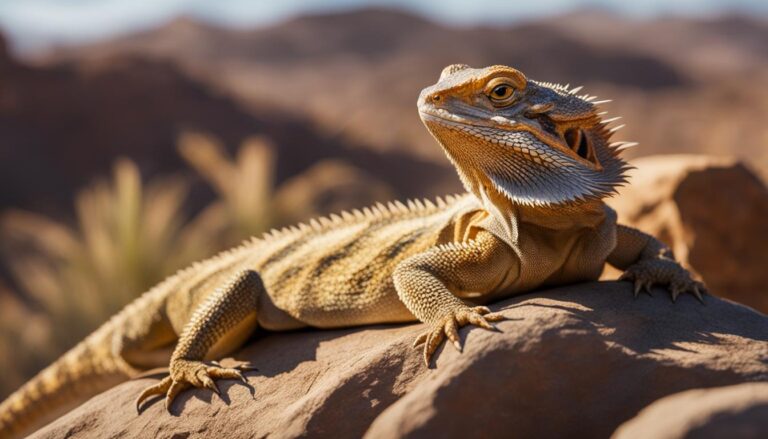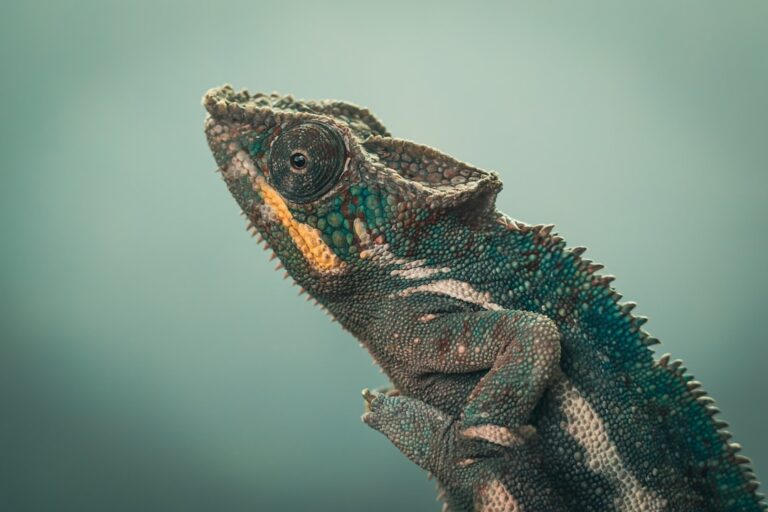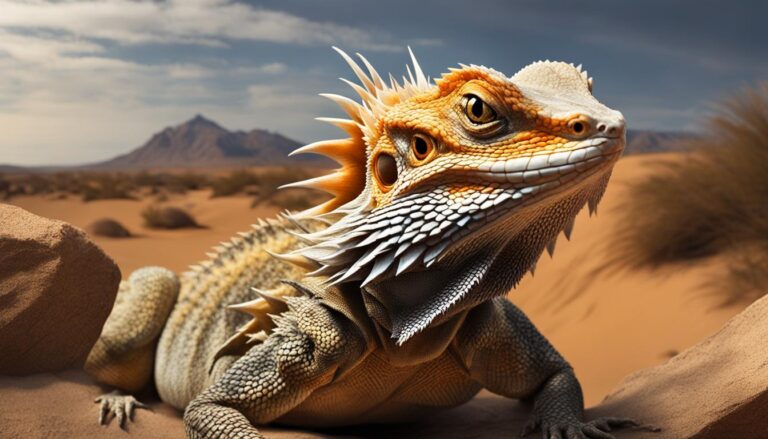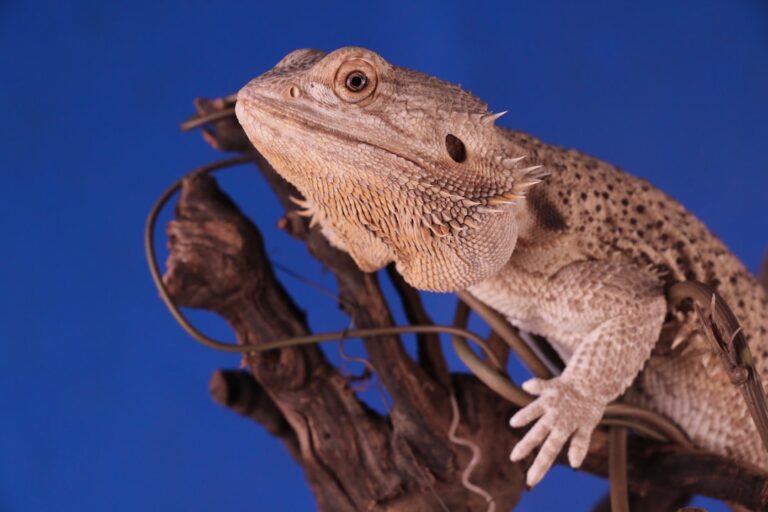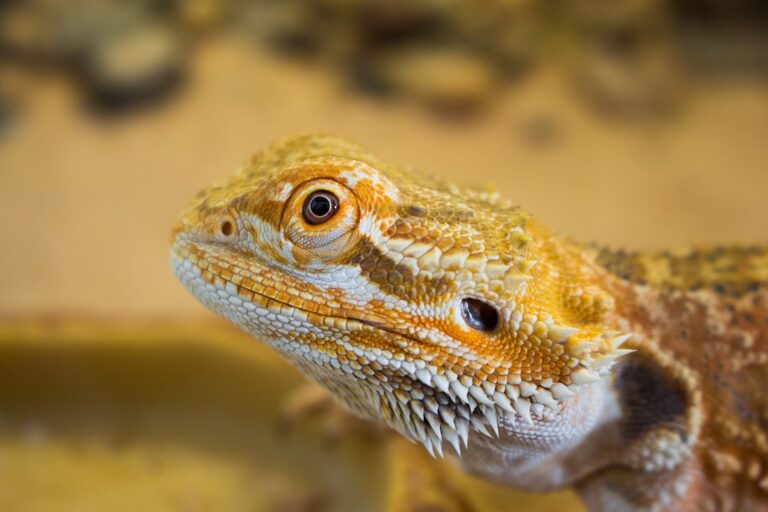Are Bearded Dragons Active?
Bearded dragons, also known as Pogona vitticeps, are popular reptile pets known for their unique appearance and docile nature. These reptiles are native to the arid regions of Australia and have become increasingly popular as pets in recent years. Bearded dragons are relatively easy to care for and can make great companions for reptile enthusiasts of all ages.
When considering a bearded dragon as a pet, it is important to understand their natural behavior and needs. While they may seem like low-maintenance pets, it is crucial to provide them with an environment that mimics their natural habitat and allows them to engage in their instinctual behaviors. By understanding their natural behavior, you can ensure that your bearded dragon is happy and healthy in captivity.
Table of Contents
Understanding the Natural Behavior of Bearded Dragons
In the wild, bearded dragons are diurnal reptiles, meaning they are most active during the day. They spend their time basking in the sun to regulate their body temperature and forage for food. Bearded dragons are opportunistic omnivores, meaning they eat a variety of insects, vegetables, and fruits.
In captivity, bearded dragons exhibit similar behaviors but on a smaller scale. They still require access to heat and UVB lighting to regulate their body temperature and maintain proper health. They also need a varied diet that includes both insects and plant matter.
Factors that Affect the Activity Level of Bearded Dragons
Several factors can affect the activity level of bearded dragons in captivity. These include temperature and lighting requirements, diet and hydration, and enclosure size and setup.
Temperature and lighting requirements are crucial for bearded dragons’ overall health and activity level. They require a basking spot with temperatures ranging from 95-105°F (35-40°C) during the day and cooler temperatures around 75-85°F (24-29°C) at night. UVB lighting is also essential for bearded dragons as it helps them metabolize calcium and prevents metabolic bone disease.
Diet and hydration are also important factors in maintaining the activity level of bearded dragons. They require a balanced diet that includes a variety of insects, such as crickets and mealworms, as well as leafy greens and vegetables. It is important to provide fresh water daily and ensure that your bearded dragon stays hydrated.
Enclosure size and setup can also impact the activity level of bearded dragons. They require a spacious enclosure that allows them to move around freely. The enclosure should include hiding spots, climbing structures, and a basking area. Providing a stimulating environment will encourage natural behaviors and keep your bearded dragon active.
How to Encourage Activity in Bearded Dragons
To encourage activity in bearded dragons, it is important to provide them with a stimulating environment that mimics their natural habitat. This can be achieved by providing a variety of climbing and hiding spots, offering toys and enrichment activities, and interacting with your bearded dragon.
Bearded dragons are natural climbers, so providing them with branches or rocks to climb on can help keep them active. Hiding spots, such as caves or logs, can also provide mental stimulation and encourage exploration.
Toys and enrichment activities can also keep your bearded dragon engaged and active. You can provide them with puzzle feeders or scatter their food around the enclosure to encourage foraging behavior. Additionally, you can introduce safe toys, such as balls or tunnels, for them to interact with.
Interacting with your bearded dragon is another way to encourage activity. You can take them out of their enclosure for supervised playtime or allow them to explore a safe area outside of their enclosure. This interaction not only provides mental stimulation but also strengthens the bond between you and your pet.
The Importance of Exercise for Bearded Dragons
Regular exercise is crucial for the overall health and well-being of bearded dragons. Exercise helps them maintain a healthy weight, promotes muscle development, and prevents obesity. It also stimulates their mind and prevents boredom.
In the wild, bearded dragons spend a significant amount of time foraging for food and exploring their surroundings. In captivity, it is important to provide opportunities for exercise to mimic these natural behaviors. By providing a stimulating environment and engaging in interactive play, you can ensure that your bearded dragon gets the exercise they need.
Signs of a Healthy, Active Bearded Dragon
There are several behaviors to look for in a healthy, active bearded dragon. These include alertness, curiosity, and a healthy appetite. A healthy bearded dragon will have bright eyes, clear skin, and a strong grip. They should also be active during the day and exhibit natural behaviors such as basking, exploring their enclosure, and hunting for food.
To determine if your bearded dragon is getting enough exercise, you can observe their behavior. If they are active during the day, regularly exploring their enclosure, and engaging in natural behaviors, they are likely getting enough exercise. However, if they appear lethargic or show signs of stress or boredom, it may be necessary to provide additional opportunities for exercise.
Common Reasons for Inactivity in Bearded Dragons
There are several reasons why a bearded dragon may become inactive. These can include health issues or environmental factors that affect their activity level.
Health issues such as respiratory infections or parasites can cause lethargy in bearded dragons. If you notice any changes in your bearded dragon’s behavior or appearance, it is important to consult with a veterinarian to rule out any underlying health issues.
Environmental factors can also affect the activity level of bearded dragons. If the temperature or lighting in their enclosure is not optimal, they may become lethargic. It is important to regularly monitor and adjust the temperature and lighting in their enclosure to ensure they are comfortable and active.
How to Keep Your Bearded Dragon Active during Winter
During the winter months, it is important to make adjustments to your bearded dragon’s enclosure to ensure they stay active and healthy. This includes maintaining proper temperature and lighting and providing indoor exercise options.
To maintain proper temperature and lighting during colder months, you can use a ceramic heat emitter or a reptile-specific heating pad. These can provide the necessary heat without disrupting the natural day-night cycle. Additionally, you can use a UVB light specifically designed for reptiles to ensure they are getting the necessary UVB exposure.
Indoor exercise options for bearded dragons can include supervised playtime outside of their enclosure or providing them with a larger play area within their enclosure. You can also introduce new toys or enrichment activities to keep them engaged and active.
The Role of Diet in Bearded Dragon Activity
Diet plays a crucial role in the energy levels and activity of bearded dragons. A balanced diet that includes a variety of insects, leafy greens, and vegetables provides the necessary nutrients for optimal health and activity.
Bearded dragons require a feeding schedule that includes both live insects and plant matter. Juvenile bearded dragons should be fed insects daily, while adult bearded dragons can be fed insects every other day. Leafy greens and vegetables should be offered daily.
It is important to provide a variety of insects, such as crickets, mealworms, and dubia roaches, to ensure a balanced diet. Additionally, offering a variety of leafy greens and vegetables will provide essential vitamins and minerals.
Tips for Creating an Active Environment for Your Bearded Dragon
Creating an active environment for your bearded dragon is essential for their overall health and well-being. This can be achieved by carefully designing their enclosure and making exercise and play a regular part of their routine.
When setting up their enclosure, it is important to provide a variety of climbing and hiding spots. This can include branches, rocks, caves, and logs. These structures will encourage natural behaviors and keep your bearded dragon active.
Regular exercise and play should also be incorporated into your bearded dragon’s routine. This can include supervised playtime outside of their enclosure or providing them with a larger play area within their enclosure. You can also introduce new toys or enrichment activities to keep them engaged and active.
Conclusion:
In conclusion, understanding the natural behavior of bearded dragons is crucial for providing them with a stimulating environment that promotes activity and overall health. By considering factors such as temperature and lighting requirements, diet and hydration, and enclosure size and setup, you can ensure that your bearded dragon remains active and happy in captivity.
Regular exercise is important for bearded dragons as it helps them maintain a healthy weight, promotes muscle development, and prevents obesity. By providing a stimulating environment, offering toys and enrichment activities, and interacting with your bearded dragon, you can encourage regular exercise and prevent health issues.
Creating an active environment for your bearded dragon requires careful consideration of their needs and preferences. By providing a variety of climbing and hiding spots, offering toys and enrichment activities, and making exercise a regular part of their routine, you can ensure that your bearded dragon remains active and engaged. Prioritizing exercise and activity will contribute to their overall health and happiness as a pet.
If you’re interested in the activity levels of reptiles, you might also want to check out the article on “Are Chameleons Smart?” It explores the intelligence and behavior of these fascinating creatures. Click here to read more about it.


